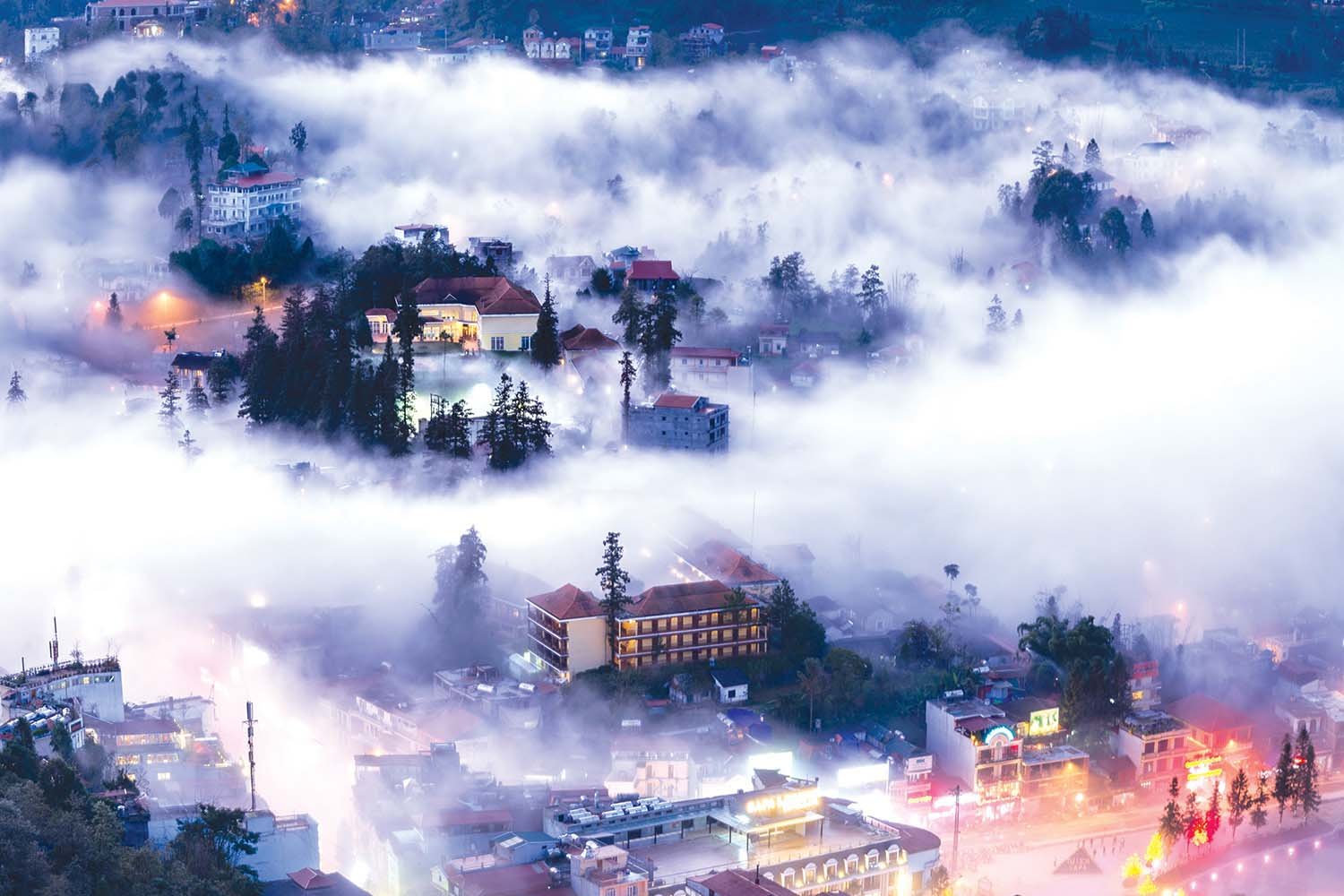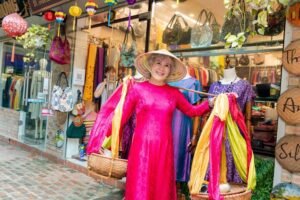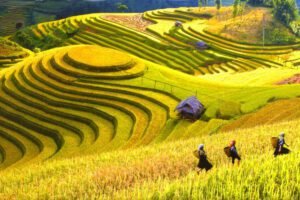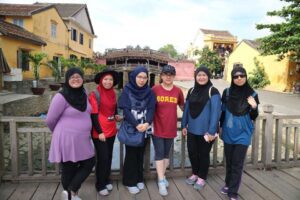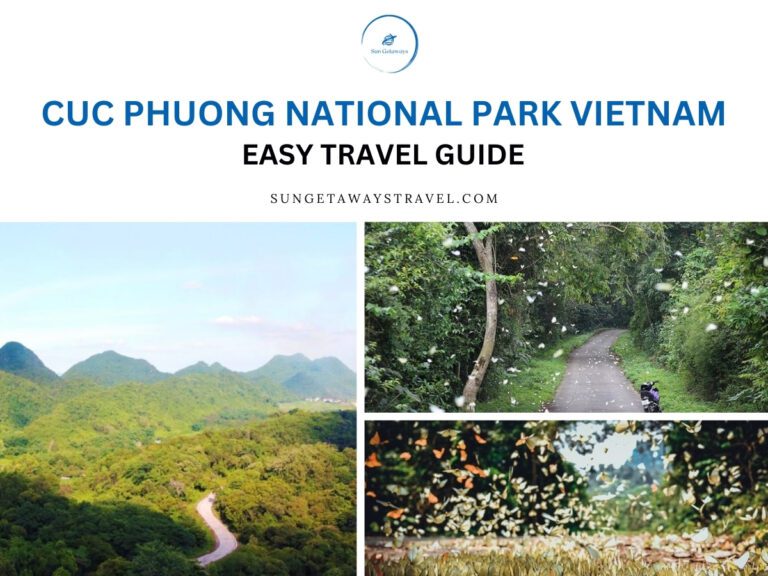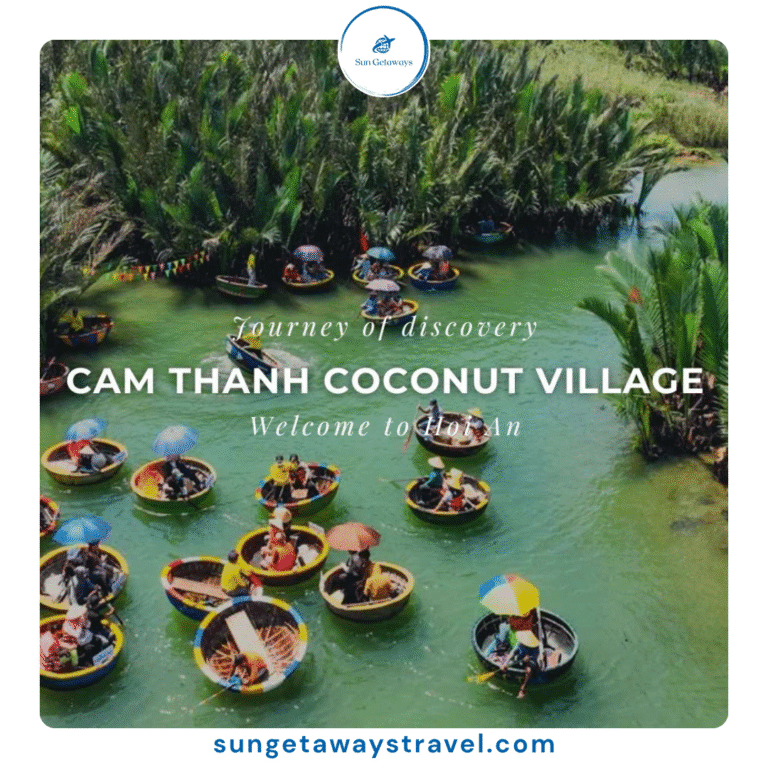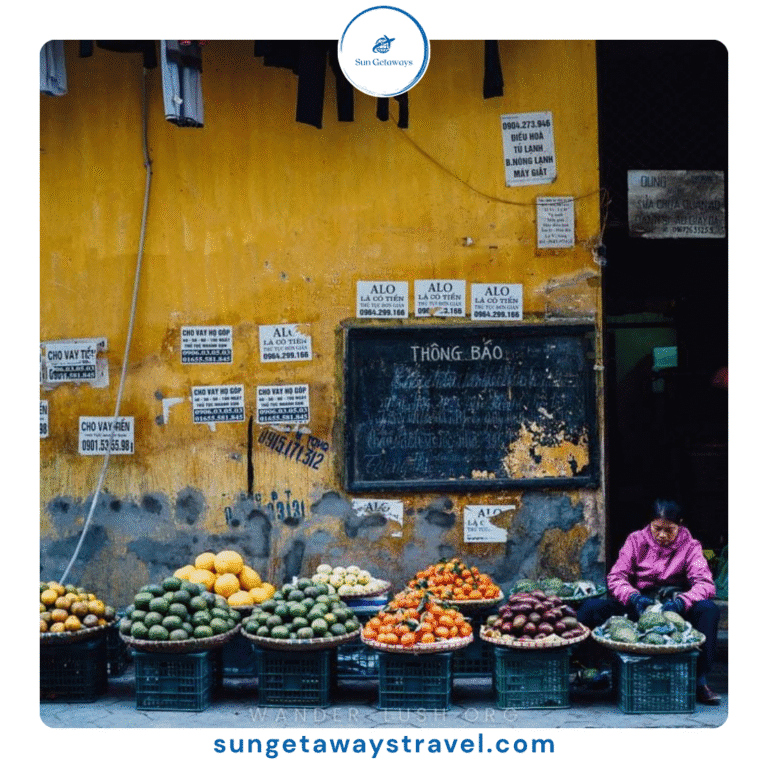Son Tra Mountain – Blend of Nature and Culture in Da Nang
 PhamDuong
PhamDuong Nestled in the northeastern part of Da Nang City, Son Tra Mountain, also widely known as Son Tra Peninsula which is one of the most captivating natural treasures in Central Vietnam. Unlike other mountains in Vietnam, which often require long journeys to reach, it is just a short drive from the bustling city center, making it both accessible and full of surprises.
1. Location and Natural Significance
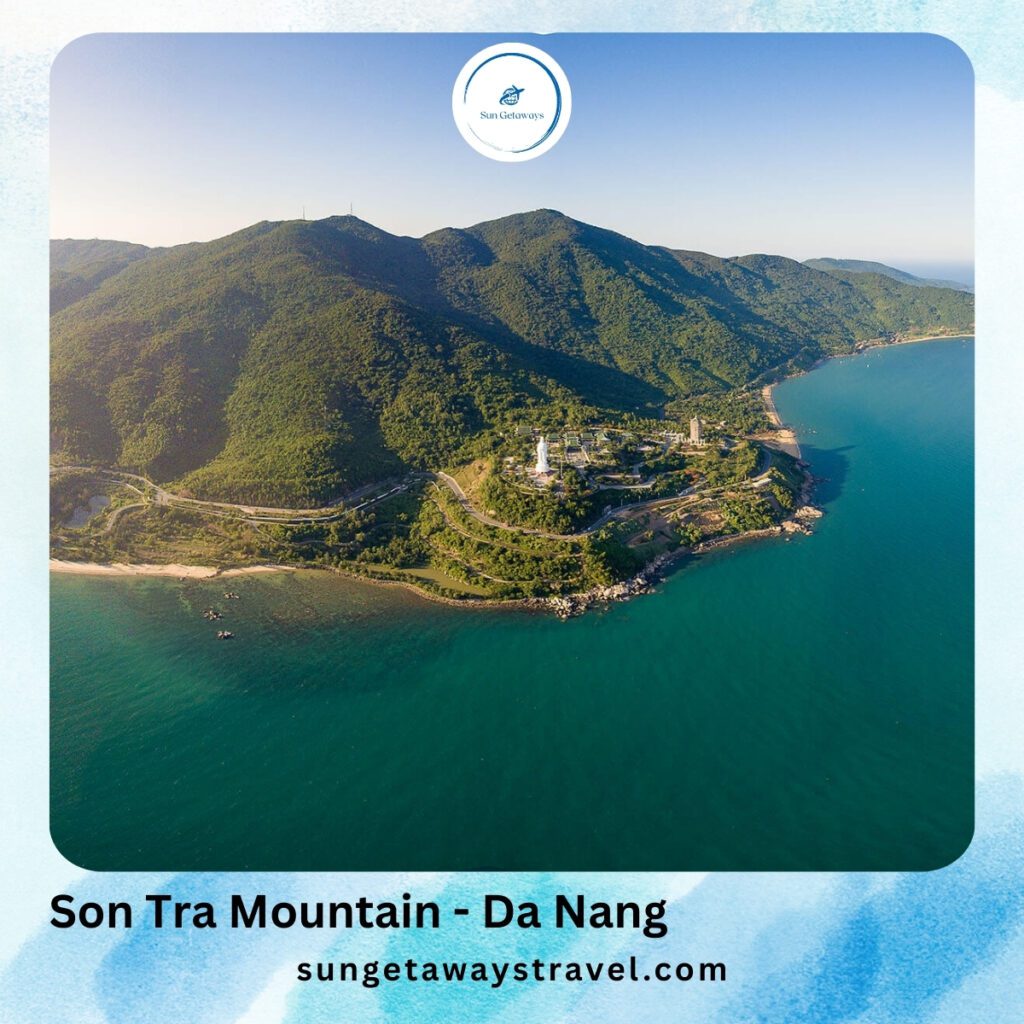

Son Tra Mountain, also known as Monkey Mountain, rises 693 meters above sea level and covers more than 4,400 hectares of lush forest. Locals often call it the “green lung” of Da Nang, as its dense vegetation helps regulate the climate and shield the city from storms. With its mix of mountains, coastline, and forest trails, Son Tra offers a rare combination of natural beauty and ecological importance that sets it apart from other mountains in Vietnam.
2. The Meaning Behind the Name “Son Tra”
The name “Son Tra” is believed to come from the abundance of wild “tra” trees (a type of local tea plant) that used to cover the mountain slopes. Over time, it has also been associated with legends of fairies, especially the tale of heavenly maidens descending to bathe in the mountain’s streams. This is why nearby places such as Tien Sa (Fairy Landing) still carry traces of these myths, blending nature with folklore.
3. History and Cultural Significance of Son Tra Mountain


Beyond legends, Son Tra played an important role in Vietnam’s modern history. During the Vietnam War, it was a strategic military site where the U.S. army established radar stations, one of which, Radar Station 29 still exists today and is nicknamed “Indochina’s Eye.” These remnants add a cultural and historical layer to Son Tra, making it not only a natural treasure but also a landmark that reflects Vietnam’s resilience and past.
4. Top Attractions on Son Tra Mountain
4.1. Linh Ung Pagoda and the Lady Buddha Statue
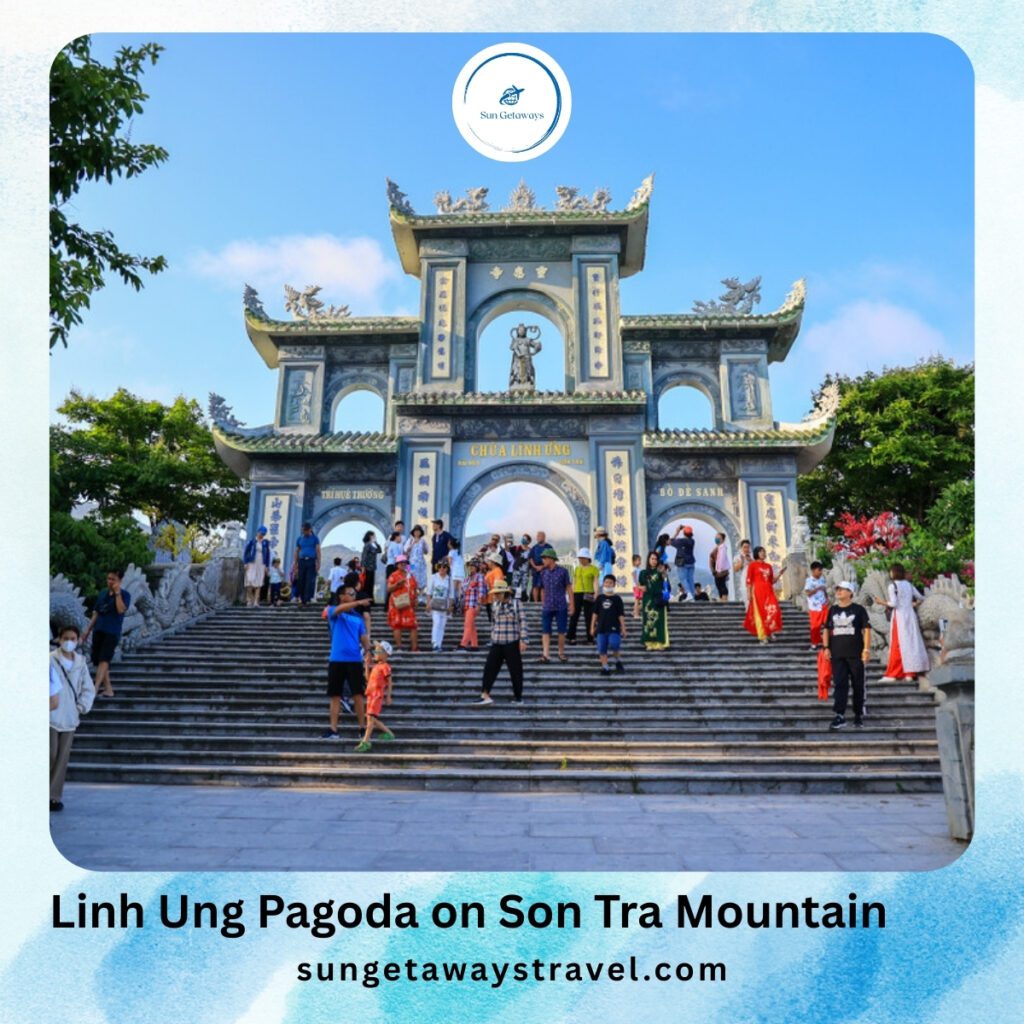

Linh Ung Pagoda is the most famous spiritual site on Son Tra Peninsula, drawing both locals and international travelers. Often regarded as one of the most beautiful pagodas in Vietnam, it stands out with its 67 – meter Lady Buddha statue, the tallest of its kind in the country, facing the East Sea with one hand raised in blessing. From the pagoda courtyard, visitors can admire sweeping views of Da Nang’s coastline, the curving beaches, and even the Marble Mountains on a clear day.
Visiting at sunrise or sunset creates a magical atmosphere, with the sea bathed in golden light and the pagoda bells echoing softly. It’s not only a place of worship but also one of the most iconic viewpoints among mountains in Vietnam.
4.2. Ban Co Peak on Son Tra Peninsula
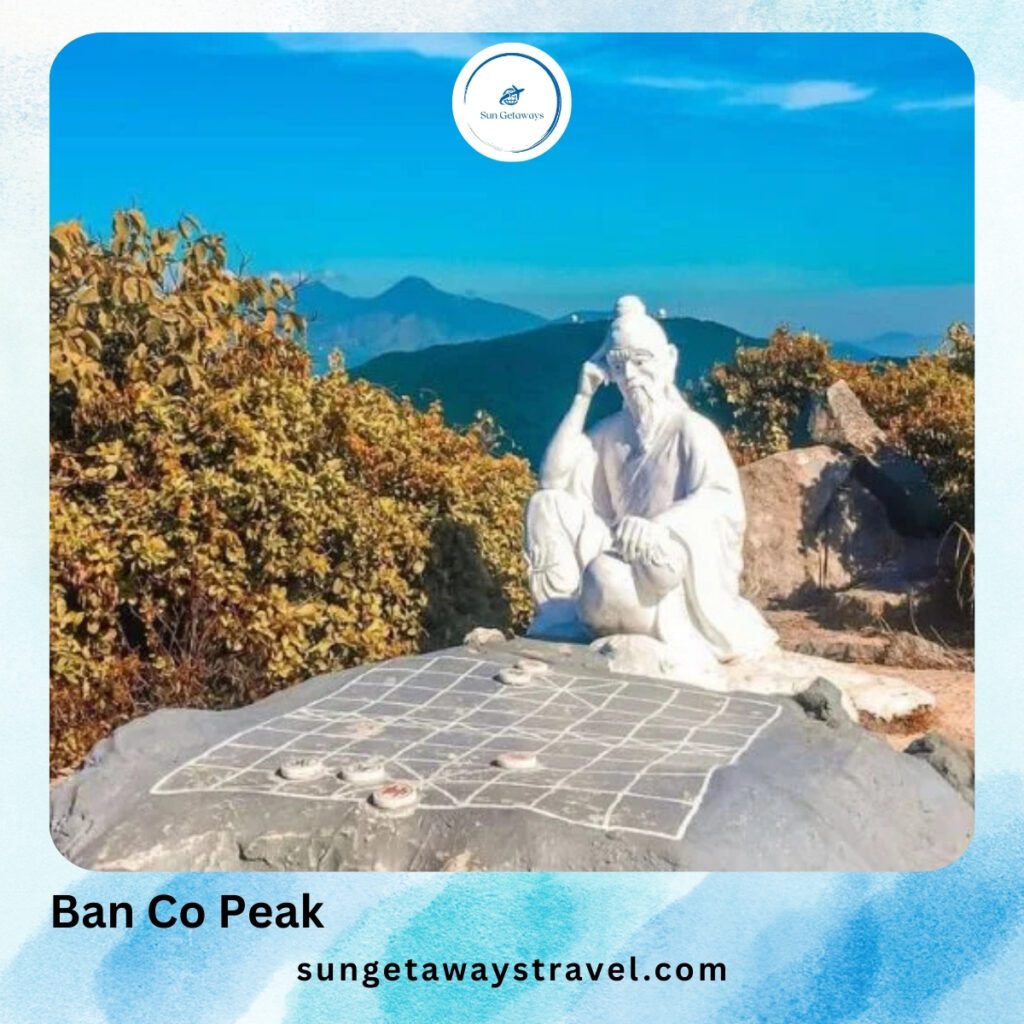

Ban Co Peak (Chessboard Peak) sits at 700 meters above sea level and is a must-visit for panoramic sightseeing on Son Tra Mountain. The name comes from the legend of heavenly fairies playing chess here, and the stone chessboard at the summit remains as a symbol of this myth.
The road up is winding but scenic, passing through lush greenery with frequent stops for photos. From the peak, you’ll enjoy a 360 – degree view of Da Nang city, the blue East Sea, and other mountain ranges stretching into the horizon.
4.3. The Thousand – Year Banyan Tree


The thousand-year banyan tree (Cây Đa Ngàn Năm) is one of Son Tra Peninsula’s most mysterious and awe-inspiring attractions. Its sprawling roots twist across the forest floor, while the vast canopy provides cool shade. Locals consider it a sacred guardian of the forest and believe it brings good luck to visitors.
Because of its grandeur, the tree is often compared to natural wonders in other ancient mountain forests of Vietnam. Hikers often rest here before continuing deeper into Son Tra’s trails.
4.4. Pristine Beaches: Tien Sa, Bai But, and Bai Rang
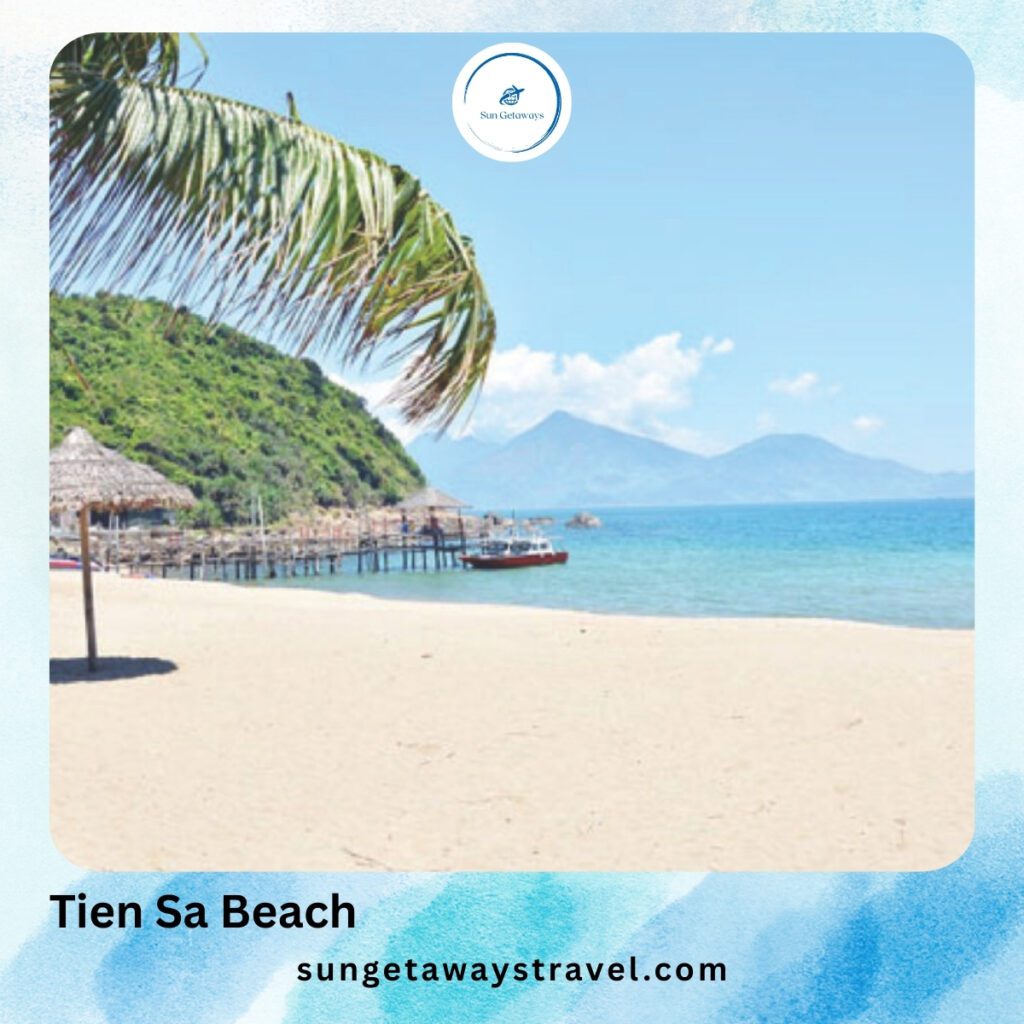

The beaches around Son Tra Mountain are famous for their untouched beauty. Tien Sa Beach offers crystal – clear water and white sand, perfect for swimming or family picnics. Bai But, meanwhile, is popular with visitors who want a mix of leisure and spirituality, as it lies near Linh Ung Pagoda.
Bai Rang is less commercialized, with natural rocky formations and small sandy patches hidden between cliffs. These beaches are quieter than Da Nang’s city beaches, giving travelers a chance to enjoy the sea in peace.
4.5. Wildlife Encounters: Red – Shanked Douc Langurs


Son Tra Mountain is the last stronghold of the rare red-shanked douc langur, one of the most beautiful primates in the world. Known as the “Queen of primates,” these creatures have vivid red legs, golden faces, and move gracefully in the treetops. Spotting them in their natural habitat is considered a highlight of eco – tourism in Vietnam.
Visitors often join guided tours to increase their chances of seeing the langurs, as they live high in the forest canopy. These encounters remind travelers of Son Tra’s importance in preserving Vietnam’s wildlife diversity.
4.6. Radar Station 29 and Son Tra Lighthouse
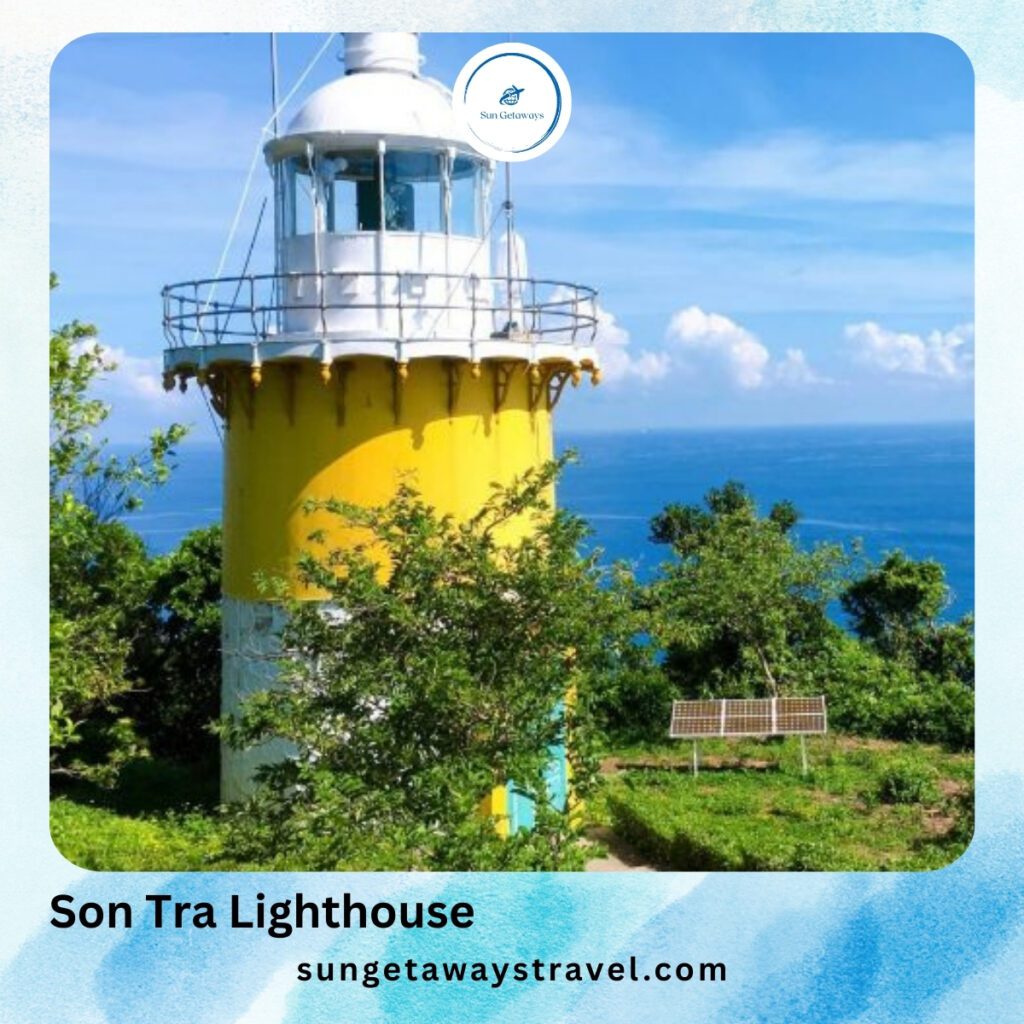

Radar Station 29, known as “Indochina’s Eye,” was built during wartime and now serves as a historic site. From here, you can see the sea, spot ships, and observe weather patterns. It is both strategic and scenic.
Nearby is the Son Tra Lighthouse, built by the French in the 19th century. The white-and-yellow structure is still operational and a charming photography spot with expansive ocean views.
5. Things to Do on Son Tra Mountain
5.1. Trekking and Hiking Trails
Son Tra Mountain offers trekking routes suitable for both beginners and experienced hikers. Trails wind through dense jungle, past small streams, and occasionally open up to breathtaking viewpoints over Da Nang Bay.
Compared to other mountains in Vietnam, the trails here are relatively accessible, making them perfect for half – day or full – day adventures. In fact, Ban Co Peak is not only a highlight of Son Tra but also often listed among the top 4 mountains for hiking in Da Nang, alongside other scenic trails around the city.
5.2. Cycling and Motorbike Adventures


The coastal roads of Son Tra Mountain are a paradise for cyclists and motorbike riders. Each curve reveals a new panorama, from turquoise bays to thick jungle hillsides. The ride is both thrilling and relaxing, offering opportunities to stop for photos or short walks.
Many visitors rent scooters in Da Nang to spend a day exploring the peninsula at their own pace. This flexibility allows them to combine beach stops, forest trails, and viewpoints in a single trip.
5.3. Beach Activities and Water Sports


Son Tra’s beaches are not just for relaxation but also for adventure. At Tien Sa Beach, you can try snorkeling to explore coral reefs teeming with colorful fish. Bai But Beach often offers water sports like jet skiing, kayaking, and parasailing, adding excitement to your trip.
Those seeking quiet moments can lie on the sand, read a book, or enjoy fresh seafood at local beachside eateries. This balance of fun and peace makes Son Tra stand out among coastal mountains in Vietnam. It also gives travelers a glimpse of Da Nang’s diverse beaches waiting to be explored.
5.4. Photography and Bird Watching
The biodiversity of Son Tra Mountain makes it a paradise for photographers and nature enthusiasts. Early mornings are the best time to capture mist rolling over the forest and the vibrant sunrise over the East Sea.
Bird watchers often spot rare species such as kingfishers, eagles, and migratory birds. Combined with the chance of seeing red – shanked douc langurs, the mountain offers endless opportunities to connect with nature through your lens.
Ready for an unforgettable adventure? Explore Da Nang, Ba Na Hills, My Son, and Hoi An with our 5-day tour and experience the best of Vietnam’s stunning landscapes and culture!
6. Practical Travel Tips for Son Tra Mountain
- Best Time to Visit: March to September, when the weather is sunny and dry. From October to February, storms can disrupt travel.
- How to Get There: Son Tra Peninsula is only 10 km from Da Nang city center. Renting a motorbike or booking a private car is the most convenient option.
- Accommodation: While many visitors stay in Da Nang, eco-resorts and homestays near Son Tra are ideal for those who prefer to immerse themselves in nature.
- Responsible Travel: Protect the environment by avoiding littering and keeping a respectful distance from wildlife.
Need more tailored advice for your trip? Don’t hesitate to reach out to us directly for quick support and customized travel tips.
7. Son Tra Peninsula and Other Famous Mountains in Vietnam
For travelers planning a broader adventure, Son Tra Mountain is just one highlight among many stunning mountains in Vietnam. In Da Nang alone, you can also explore:
- Marble Mountains (Ngu Hanh Son): A cluster of limestone and marble hills with caves and temples.
- Ba Na Hills: Famous for the Golden Bridge and French village, located just 30 km from Da Nang.
- Hai Van Pass: A scenic mountain pass offering breathtaking coastal views.
- Bach Ma Mountain (Hue): A national park with waterfalls and cool climate, only a few hours away.
Conclusion
Son Tra Mountain (Son Tra Peninsula) is more than just a scenic viewpoint, it’s a vibrant mix of nature, culture, and history. Among the many mountains in Vietnam, it stands out for its accessibility, biodiversity, and proximity to the sea. Whether you’re trekking to Ban Co Peak, visiting the Lady Buddha statue, or relaxing on pristine beaches, Son Tra promises unforgettable experiences.
For travelers exploring Central Vietnam, combining Son Tra with nearby attractions like the Marble Mountains, Ba Na Hills, and Hai Van Pass creates a journey full of contrasts and discoveries. If you’d like a personalized itinerary, you can explore our customized tours designed by Sun Getaways Travel for the best local experience.
Ask a question
Leave a Comment (0)
No questions yet. Be the first to ask a question!





